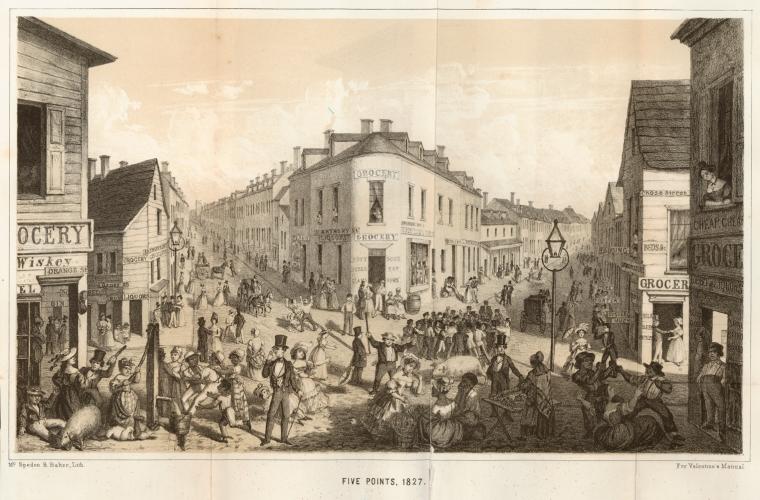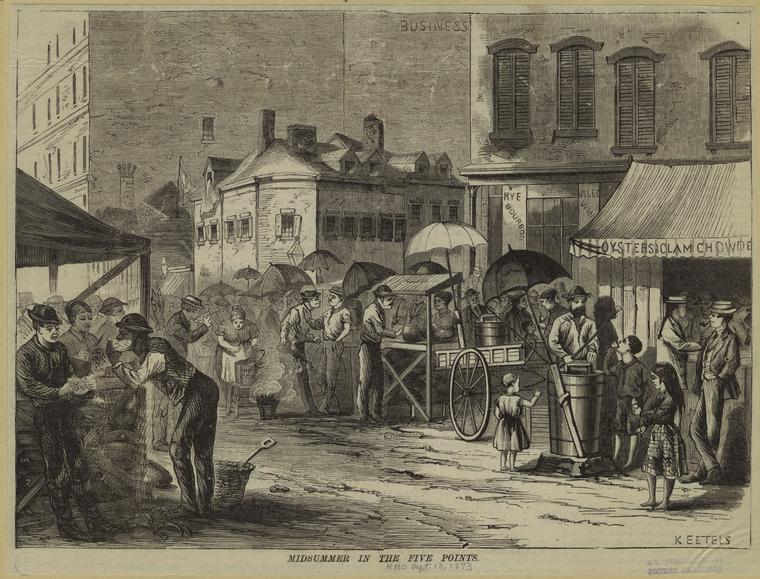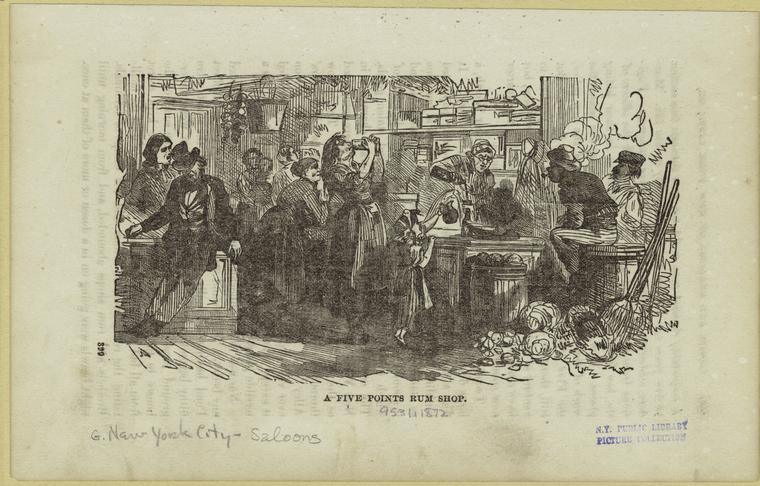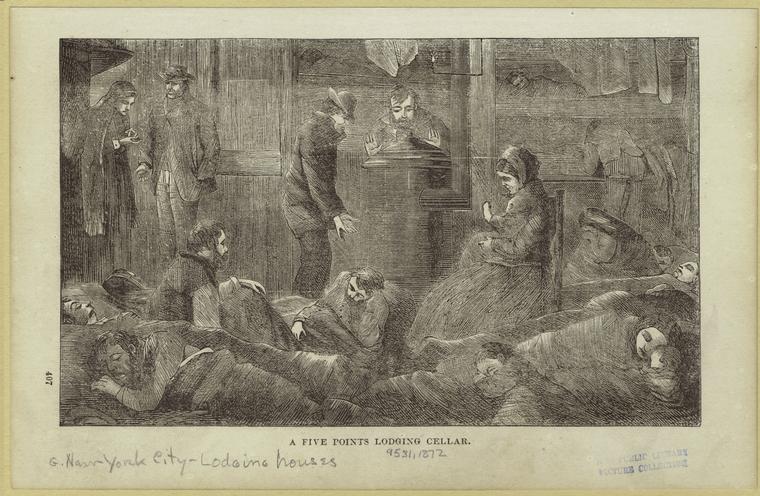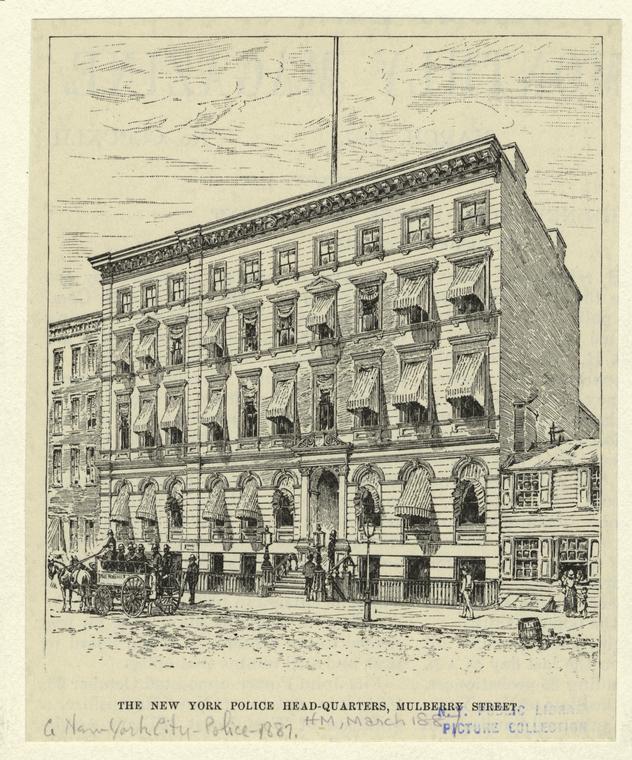The “criminal class” in late 19th Century, as defined by Timothy J. Gilfoyle, consisted of “professional criminals whose livelihoods derived exclusively from illegal activity.”[1] Yet, this label did not apply to wealthy professional criminal figures such as Boss Tweed, whose crimes were “an open secret in political circles.”[2] Instead, the low-life “‘rats, ‘gamins’, ‘Arabs’, ‘urchins’, and ‘gutter-snipes’” were actively sought and incarcerated in prisons such as the Sing Sing Penitentiary.[3] The distinction between these two types of “professional criminals” was not based on the magnitude of the crime, but the power and background of the criminals themselves. Since making an honest living “was predicated on access to certain social networks,” the impoverished were significantly more likely than others to resort to a life of crime.[4] For example, pickpocket George Appo grew up in “probably America’s most impoverished urban neighborhood”, Donovan’s Lane — part of the infamous Five Points ghetto.[5] The neighborhood of Five Points, throughout the 19th century, was “rife with vice, crime, and misery” and hence served as a neighborhood harboring the “criminal class” — that is, poor, desperate youths who engage in criminal activity to make a living as a result of both limited resources and early exposure to an environment in which other criminals exist.[6]
The Development of Five Points’ Reputation
Five Points garnered its reputation as a slum within New York as a result of a significant influx of immigrants and African-Americans in the early 19th century.[7] This drove out the native-born Protestants of the neighborhood, resulting in a single, increasingly overpopulated area that was simultaneously dangerously tense as a result of a mixture of ethnic groups in a compact place, and homogeneous in the sense that all of the groups who lived there were disadvantaged in one way or another.[8] Five Points, located in a central part of Manhattan, rapidly became the prostitution center of New York City.[9] Its proximity to affluent neighborhoods allowed pickpockets and other criminals in the neighborhood to profit considerably from wealthy civilians carrying watches and other expensive items.[10] As a result, “the wretched appearance of [Five Points, and] the immorality of its inhabitants” began to be heavily associated by the civilians of surrounding New York.[11] This created a stereotypical image of a criminal not necessarily tied to race or ethnic origin, but the neighborhood from which they came, and therefore their socioeconomic class.[12] Those who lived in Five Points, then, were in a sense considered part of a criminal class by their fellow New Yorkers, an inherently immoral group defined by the area in which they live.[13] This is evidenced by one account of the Five Points which described its inhabitants as “the lowest description and most degraded and abandoned of the human Species.”[14] In this sense, the diversity and poverty of the wave of immigrants which began to settle in the Five Points neighborhood resulted in associations and stereotypes which lent themselves to the eventual identification of a “criminal class”. In effect, this allowed for the profiling and incarceration of lower-class people who were “unable to find a secure footing in the boom-and-bust urban industrial economy,” an easier target for law enforcement than, for example, a corrupt elected official like Boss Tweed.[15]
Shifting Roles
By 1870, Five Points began to fade as a bastion for criminality as the police began to crack down more heavily on pickpockets and other slum-based criminals.[16] This coincided with the shift from corruption to decency of Tammany Hall following the death of Boss Tweed, which itself took advantage of the criminals within Five Points for voter intimidation and other crimes.[17] After years of racketeering and bullying the citizenry of New York by taking advantage of the manpower of gangs within Five Points, by 1870, Tammany Hall began to lose its influence and Five Points itself began to lose its reputation as the most fearfully poverty-stricken neighborhood in New York.[18]
The Demonization of Pickpockets
Simultaneously, the post-Civil War era in New York was also associated with a “cleaning up” of the streets — the number of pickpockets brought to trial each year in 1876 compared to immediately before the Civil War was nearly quintuple, at 242 compared to 52.[19] Such was the result of an effort to restrain and even eliminate what was known as the “dangerous class”, much in the same way that the denizens of Five Points were considered the “most degraded and abandoned of the human Species.”[20] All three of these pillars of New York crime — the elite corrupt political machine, the disadvantaged street criminals, and the neighborhood in which said crimes were fostered and committed — rose and fell around the same time, indicating a sort of criminal symbiosis that existed in the 19th century as each pillar may not have thrived as much without the others.
Five Points as a Criminal Cesspool
George Appo’s difficult upbringing in the Five Points neighborhood had a direct influence on his eventual pursuit of a life of crime.[21] Furthermore, the simultaneous rise and fall of Tammany Hall, which paralleled the peak and decline of the criminal reputation of the Five Points neighborhood, supports the notion that Five Points was a criminal cesspool — a self-perpetuating environment in which a life of crime is almost inevitable. It is only in that sort of neighborhood where the majority of street children would be introduced to that lifestyle before the age of ten.[22] It served as the stomping grounds for the “criminal class”, “street-rats and gutter-snipes”, and “degraded” immigrants and African-Americans of New York City alike. The result was the fostering of stereotypes surrounding the “criminal class” which made it all the easier to incarcerate the most disenfranchised and impoverished groups in 19th century New York City.
[1] Timothy J. Gilfoyle, A Pickpocket’s Tale. (New York: W.W. Norton and Company, 2006), 200.
[2] Lynch, Denis Tilden. “Boss” Tweed: The Story of a Grim Generation. (Ann Arbor, MI: University of Michigan Library, 2005), 301.
[3] Timothy J. Gilfoyle, “Street-Rats and Gutter-Snipes: Child Pickpockets and Street Culture in New York City, 1850-1900”, in Journal of Social History, 853.
[4] Timothy J. Gilfoyle, “Introduction”, in The Urban Underworld in Late Nineteenth-Century New York, ed. Timothy J. Gilfoyle (Boston: Bedford/St. Martin’s, 2013), 26.
[5] Gilfoyle, A Pickpocket’s Tale, 18.
[6] Anbinder, Tyler. Five Points: The 19th-century New York City Neighborhood That Invented Tap Dance, Stole Elections, and Became the World’s Most Notorious Slum. (New York: Free Press, 2001), 4.
[7] Anbinder, Five Points, 19.
[8] Anbinder, Five Points, 34.
[9] Anbinder, Five Points, 20.
[10] Anbinder, Five Points, 21.
[11] “Cornelius” to the Editor, Evening Post, September 21, 1826. From Five Points, 21.
[12] Anbinder, Five Points, 20.
[13] Evening Post, May 13, 1830; Minutes of the Common Council of the City of New York, 1784-1831, (New York, 1917). From Five Points, 21.
[14] Evening Post, May 13, 1830; Minutes of the Common Council of the City of New York, 1784-1831, (New York, 1917). From Five Points, 21.
[15] Gilfoyle, “Introduction,” 14.
[16] Anbinder, Five Points, 336.
[17] “Charles Frances Murphy”, American National Biography Online, (New York, 2000).
[18] Anbinder, Five Points, 333.
[19] Gilfoyle, A Pickpocket’s Tale, 25.
[20] Gilfoyle, A Pickpocket’s Tale, 24, and Evening Post. From Five Points, 21.
[21] Gilfoyle, A Pickpocket’s Tale, 18.
[22] Gilfoyle, A Pickpocket’s Tale, 24.
